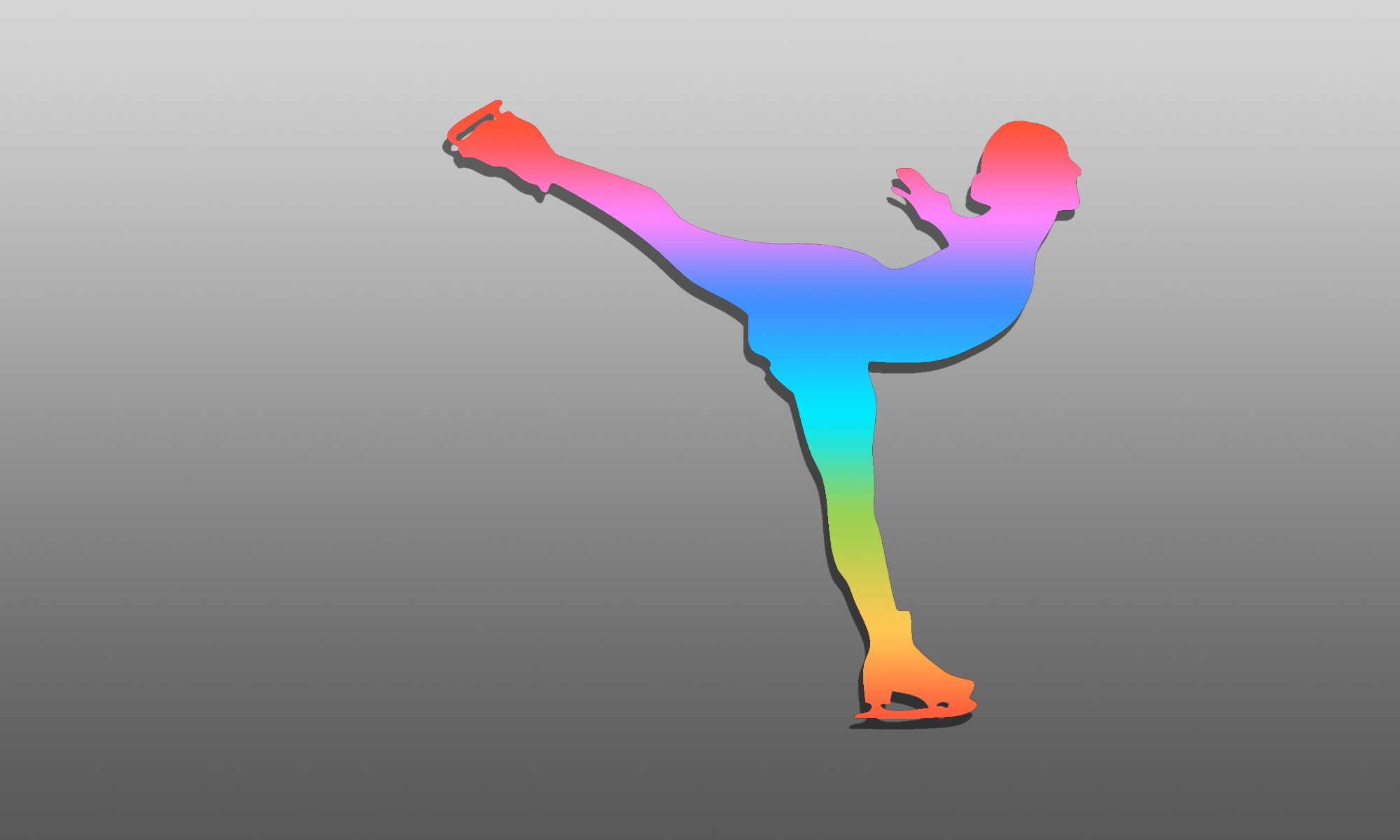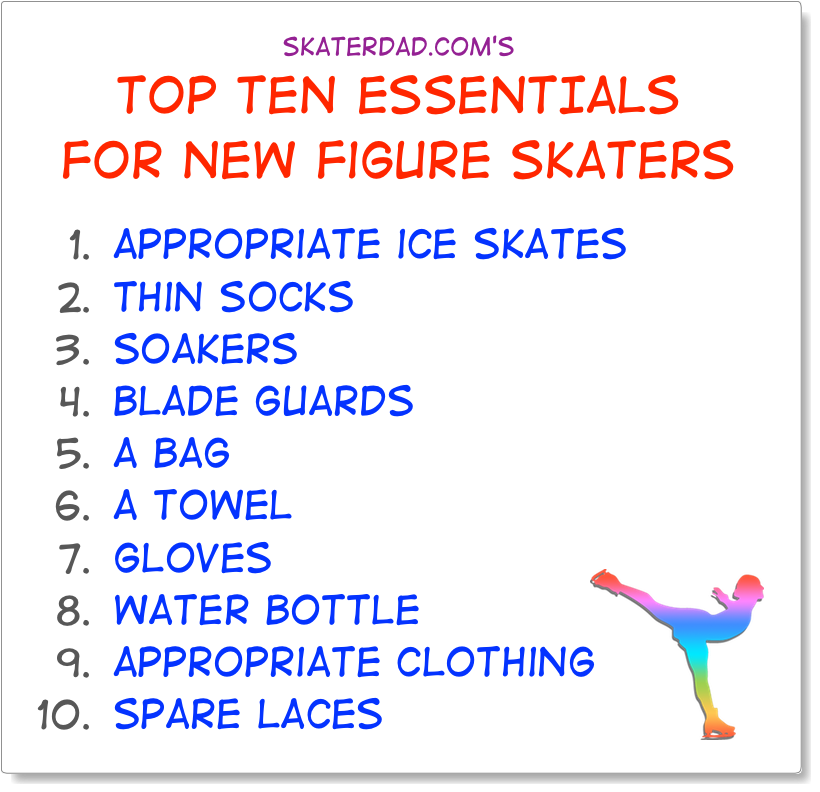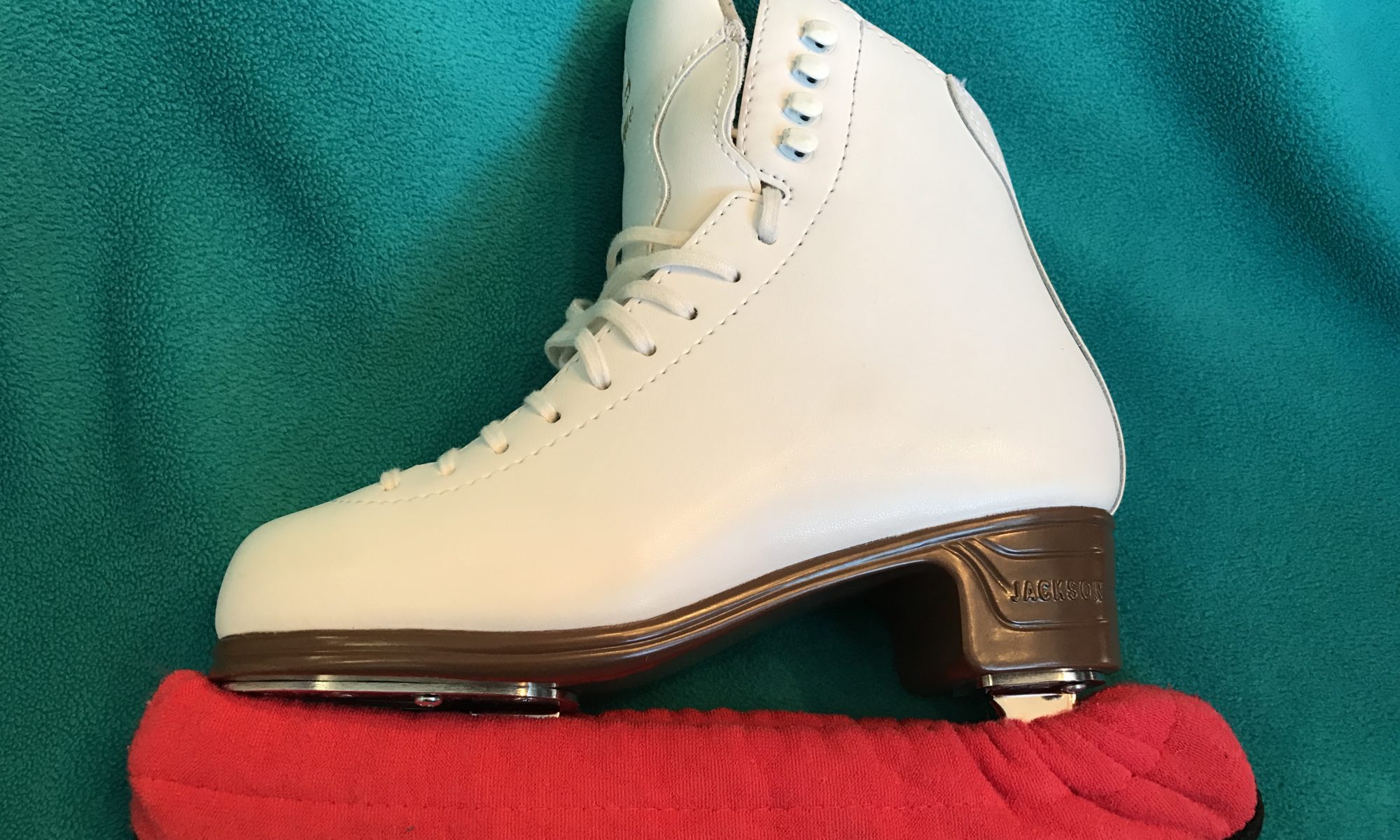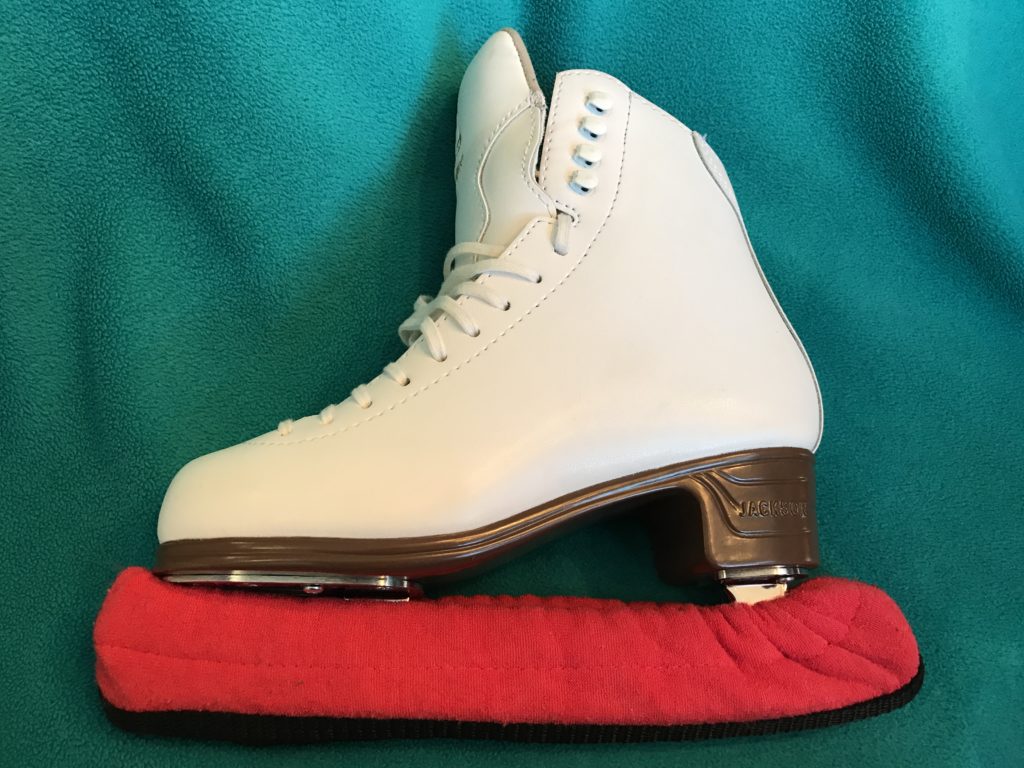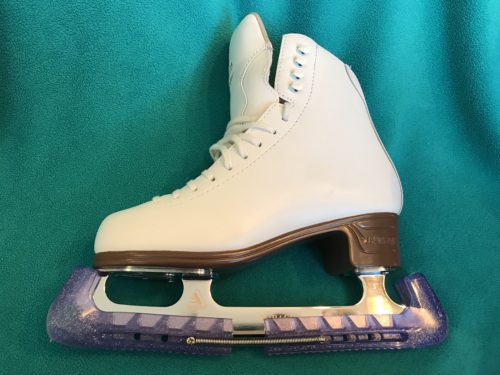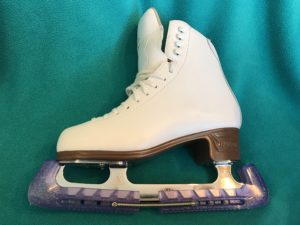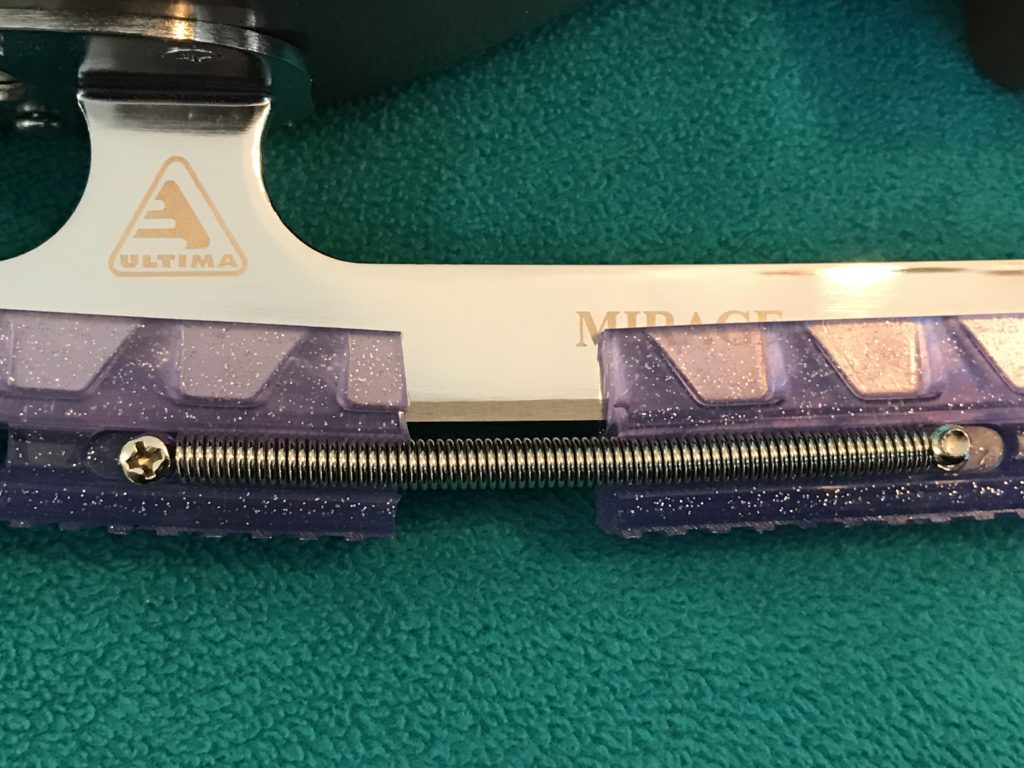What are figure skater essentials? When I first bought my children ice skates, I was a bit lost trying to determine what else I should provide for them. After asking their coaches and other skater-parents an annoying number of questions over a couple of months, I was able to piece together what my new figure skaters really needed. It would have been nice, though, if I’d had all of that information when I was first looking at buying skates.
So without further ado, here’s SkaterDad.com’s top ten essentials for new figure skaters.
New Figure Skater Essentials
Breakdown of the Figure Skater Essentials
For each of the essentials I listed above, here’s a bit more detail and some links to more information.
1. Appropriate Ice Skates
This is really the most important of the figure skater essentials. I know it sounds silly, but if you are going to buy ice skates, make sure they are suitable for the stature of the child and the level of their skating.
Link: Renting Skates versus Buying Skates (SkaterDad.com)
2. Thin Socks
Perhaps counter-intuitively, figure skaters tend to wear thin socks (maybe trouser socks for women, and thin dress socks for men). Some figure skaters even go barefoot, which should reaffirm that a thick sock is neither desirable, nor a requirement for figure skating. Soft rental skates are far more tolerant of thick socks, but when you buy your own skates, thick socks tend to go out the window.
3. Soakers
As figure skater essentials go, this one is pretty critical. No matter how carefully you dry your blades when you come off the ice, the metal is so cold that moisture will condense on it for a while after you finish skating. The simple equation is Water + Blades = Rust. In my opinion, soakers are a non-negotiable item.
Link: Soakers: Why Are They Necessary? (SkaterDad.com)
4. Blade Guards
Cheap, colorful, and they save your blades from getting ruined when you need to walk off ice or off the ice rink rubber surfaces. Buy them. Love them. Bring them with you.
Link: What Are Blade Guards? (SkaterDad.com)
5. A Bag
Don’t be under any illusion that it will be ok to bring your new figure skates back and forth to the ice rink in the cardboard box in which they were originally packaged. Trust me, I tried, and a) the box is bulky and inconvenient; b) it won’t last very long before the “handle” (i.e. hand hold) breaks; and c) there’s not much room in there for the other things you need to bring with you.
You do not–under any circumstances–have to splash for the ~$170 Zuca skate bag with the flashing LED lights in the wheels. I know the other (mostly) girls have them and they are indeed super cool, and your child will undoubtedly think that you are the most awesome parent in the whole world ever, EVER. The bags I bought for my children cost around $15 each; my kids still talk to me. Of course, if you can find somebody selling a used Zuca for $30, well, that’s a different question.
Link: Choosing an Ice Skating Bag (SkaterDad.com)
6. A Towel
How are you going to dry your skate blades and soles after you finish skating? I can’t stand using paper towels snagged from the snack bar or the bathroom; they feel like they are scratching away at the beautiful shiny blades I paid so much for. Thus when you go skating I advise bringing either a towel, a chamois cloth, a terry cloth, or anything else soft and absorbent which will dry the blades gently effectively. Yes, this includes the ShamWow, if that’s what floats your boat!
7. Gloves
Most people I’ve spoken to tell me that their hands get cold when they skate. Gloves, therefore, are probably a requirement for most skaters, during practice, at least. There’s no special magic to this item; buy whatever gloves suit your budget, keep your hands warm and allow you to still grab the rail, a skate (if you’re doing those kind of moves) or your partner’s hand (for pair skating).
8. Water Bottle
Skating is exercise, and that means you’ll get thirsty. A water bottle is something you can bring rink-side without upsetting anybody. For perhaps obvious reasons, don’t fill it with anything else except water; nobody wants a sticky brown soda puddle freezing on the ice surface. Yuck. And anyway, drinking soda during a vigorous skating workout sounds like a recipe for trouble, if you ask me.
9. Appropriate Clothing
What is appropriate clothing? There’s no right answer, but if you believe many skaters there are some wrong
answers. The only thing it seems to be generally agreed is inappropriate to wear for skating is a pair of jeans, in part because the seams can chafe, in part because they’re not typically very flexible, and in part because once wet, jeans tend to hold the water and then get freezing cold, which is not very nice. That said, I’ve seen stretch jeans worn quite successfully before, so just expect a little gentle ribbing if you wear them. Beyond that, the general idea is to wear something that doesn’t restrict the movement of your arms or legs, and that keeps you warm enough. On the bottom half, boys typically seem to wear sweat pants or tracksuit pants, and girls typically lean towards lined leggings or sweat pants. On the top half I see everything from t-shirts (my children are apparently impervious to cold) through long sleeve shirts, to sweaters, hoodies and sweatshirts. The trick is to bring layers of clothing so that the skater can adjust to how they feel out on the ice. Once it’s a little clearer what works best for each skater, it’s easier to bring exactly what’s needed going forward.
10. Spare Laces
I’m guilty of failing on this one, but if a lace breaks just before a skating session (or worse, a competition), somebody is going to be upset. Whether the child will be more upset because they can’t skate today, or I would be more upset because I just wasted an entrance fee, is another matter entirely. Laces are relatively cheap, so having a spare pair of the right length in your bag will at some point save your figurative bacon. And now I should really go and order those spares…
